Operation Attleboro
The Beginning of the End
15 November 1966
by W.S. McCallum

North of Tây
Ninh, two months after the start of Operation Attleboro, the US 1st
Division is sent in to secure a Landing Zone near the Old French Fort.
The LZ is
in a forested area that is largely unpopulated. A reconnaissance overflight
showed the general vicinity south of the LZ to be deserted:






The first elements
of the 1st Division are flown into the LZ….


The Huey
gunners scan the trees for enemy activity, but see no movement.



The first
wave comes into the LZ unopposed and secures the immediate area.



Having
debussed their loads, the five Hueys take off and return to base to shuttle in
the next wave of infantry to the LZ, while the Battalion commander’s C&C
helicopter remains behind at the LZ.



Although
the wait is all too long for the few men holding the LZ, soon the Hueys are
back with their second load of troops.



Now there
are two platoons on the ground. They reinforce the LZ’s perimeter.

The Hueys
take off a second time, heading back to pick up more troops.

But below
there is movement; members of the NVA 101st Regiment have been dispatched to
reconnoiter the LZ. The returning Hueys pass right over the top of them. The
NVA let rip with everything they have: AK47s, LMGs and RPGs.


The south
side of the LZ has now become very hot indeed. However the ground fire is
erratic and wide. Knowing better than to linger, the Huey pilots keep on their
course so they can head back and pick up the next load of troops.
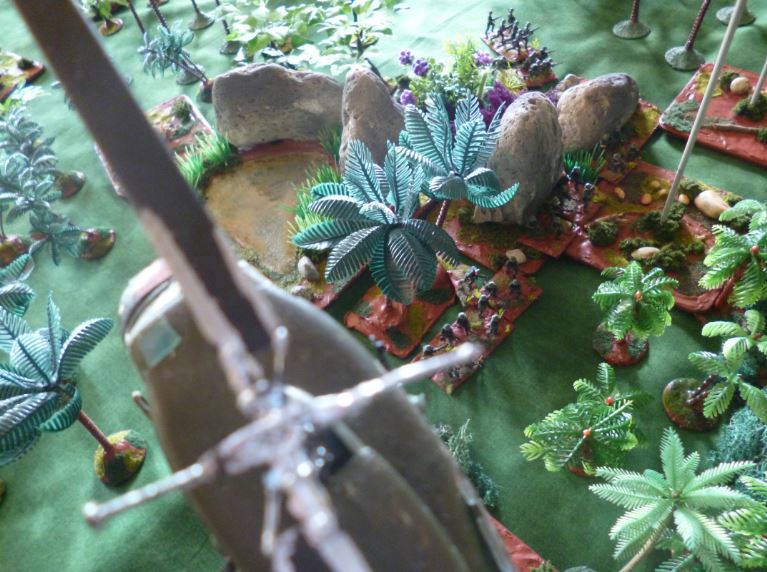
The third
airlift comes in from the northern side of the LZ, avoiding NVA ground fire.


The LZ is
not hot yet, as the NVA troops in the vicinity are not advancing close enough
to the clearing to oppose the landing. The third wave of troops hurriedly disembarks.
There are now six platoons on the ground: two whole companies of grunts.



Upon the
northwards departure of the five Hueys, the LZ is secure, although the line is
still thin.

The NVA are
staying put. They can see from the number of helicopter landings that they are
heavily outnumbered and it would be unwise to approach the LZ. Where are their
promised reinforcements?

The US
battalion commander gives orders to one of his companies to flank the NVA
position.




A perimeter
is quietly set up around the NVA position in the rocky outcrop.
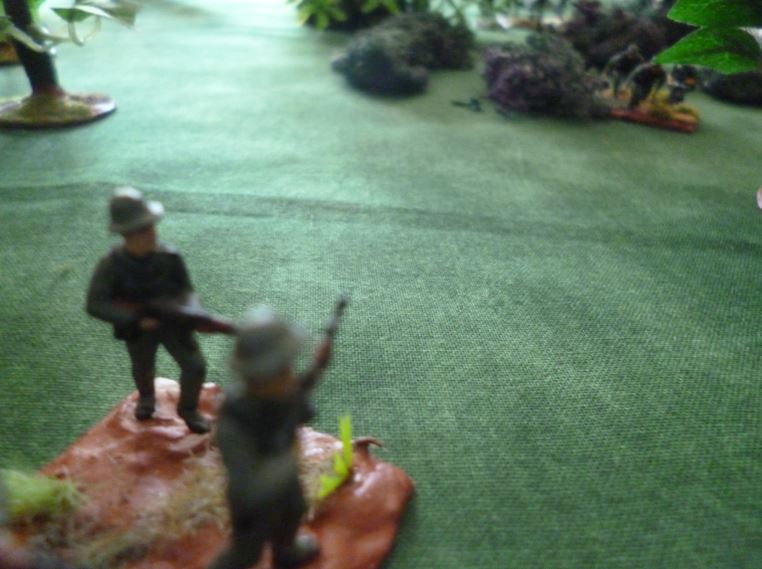
Rear elements of one of the VC platoons spot the advancing grunts and open
fire.
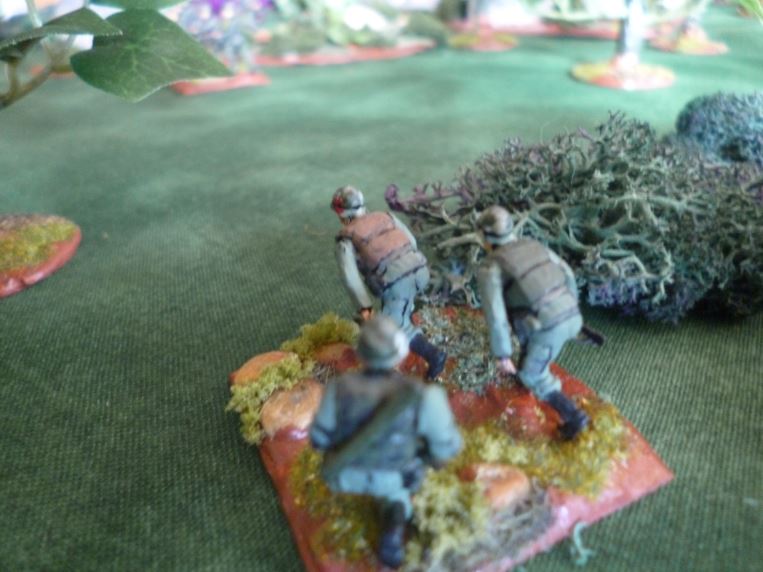
The US troops are pinned down by this fire.
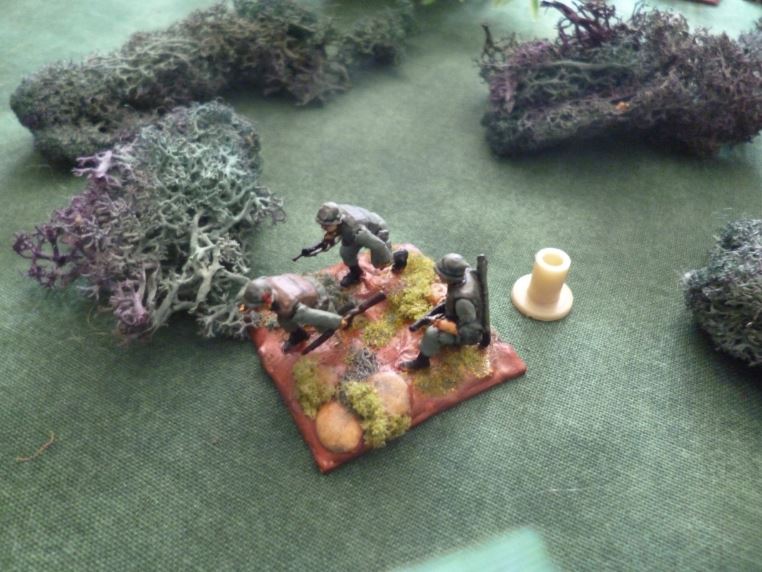
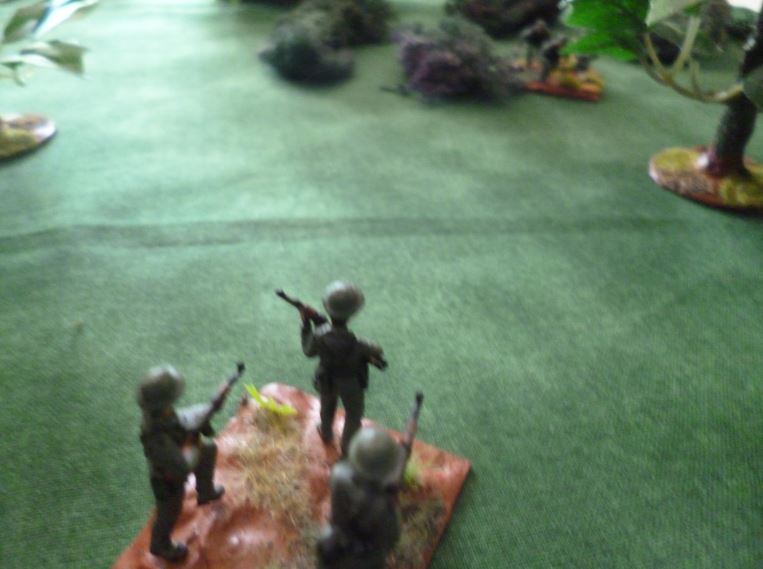
More US
troops move up and they too are pinned down.
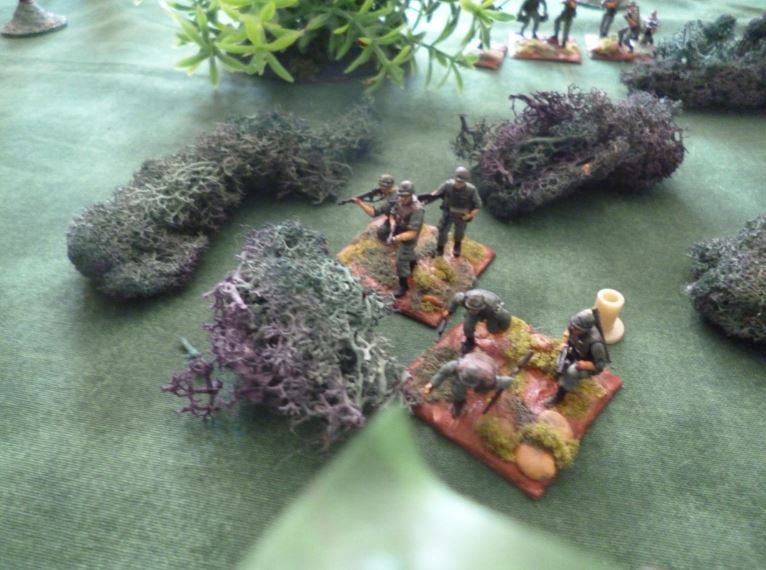
More arrive
and the firefight starts tipping in the favour of the US infantrymen.
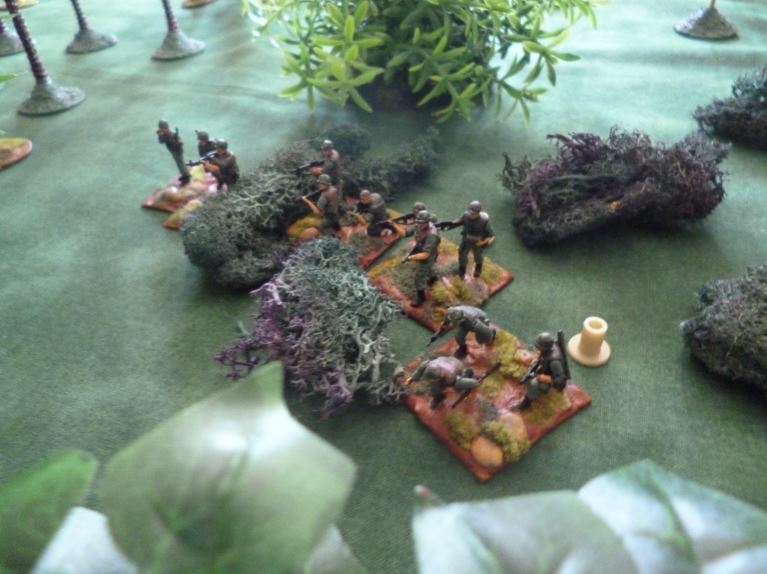
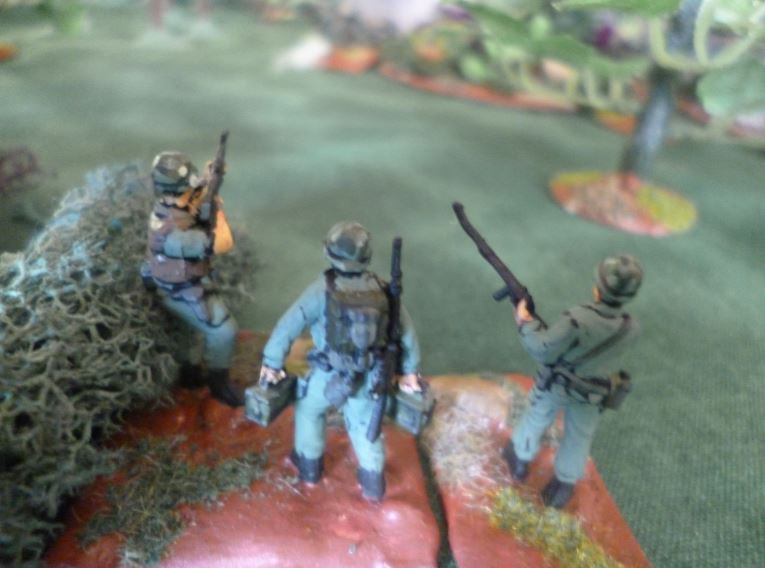
The NVA
lose their rearguard.
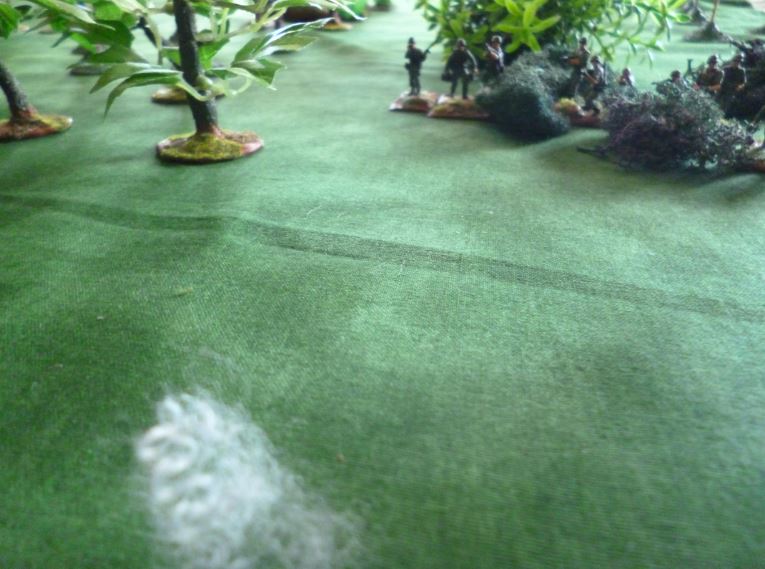
And the
others receive heavy suppressive fire.
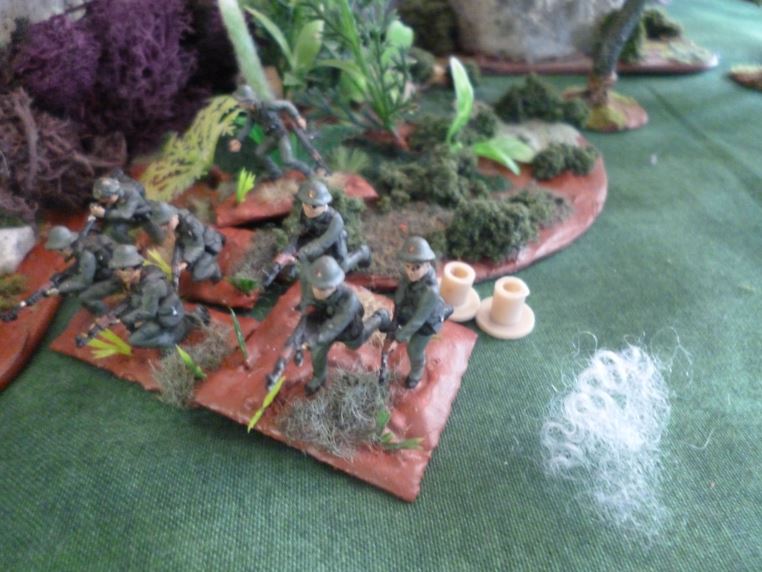
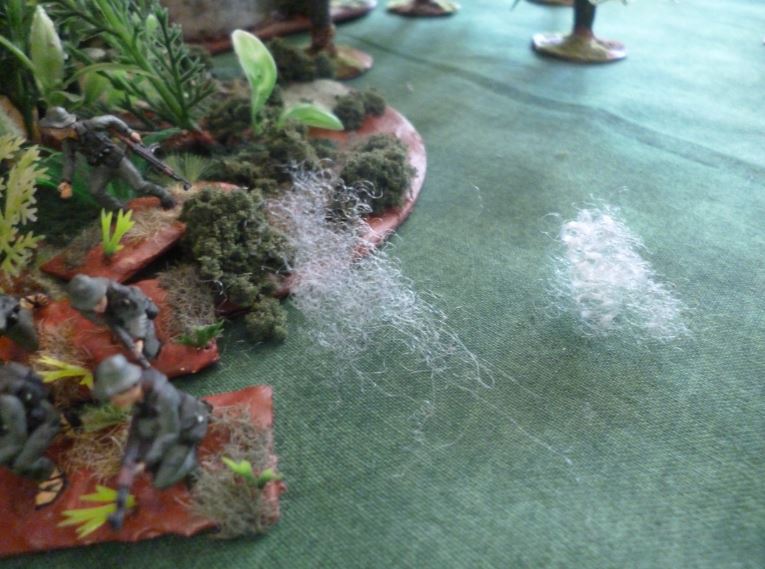
Heavy losses are taken.
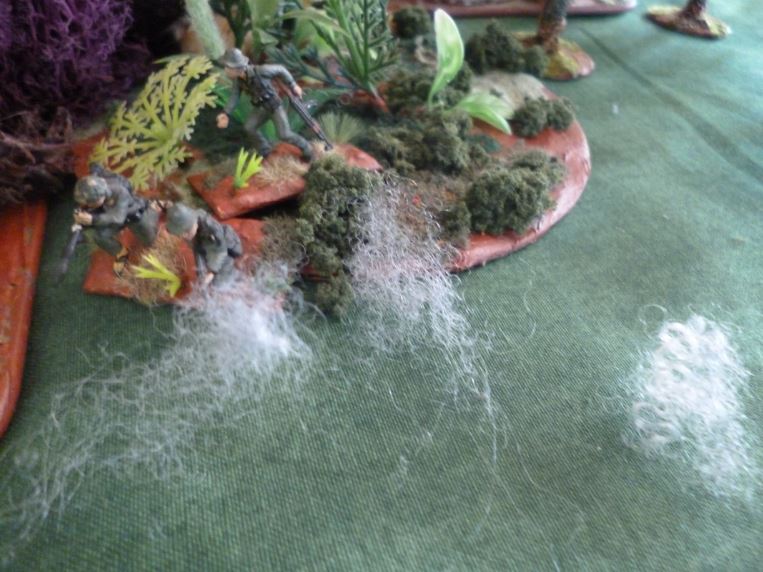

And the
unit is wiped out.

On the
other side of the rocky outcrop, US infantry are ready to go in.
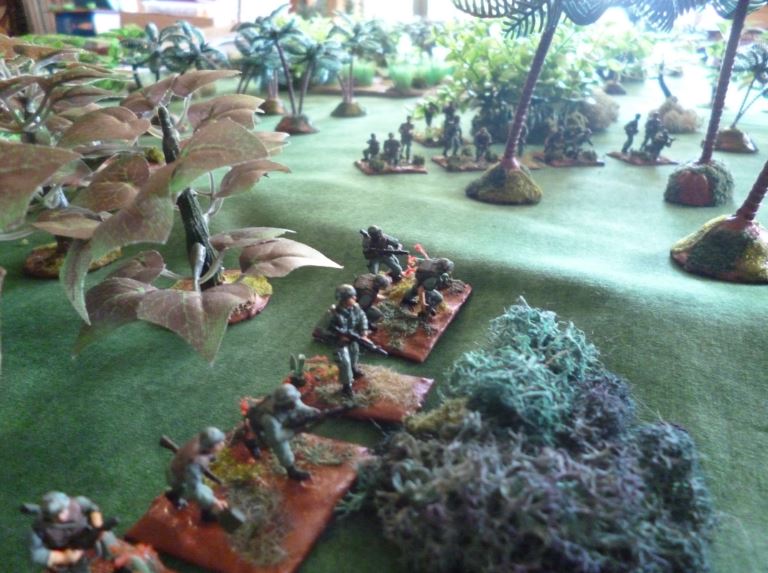
But their
jungle skills are poor and the NVA hear them coming. They open fire with AK47s
and a light machine-gun.
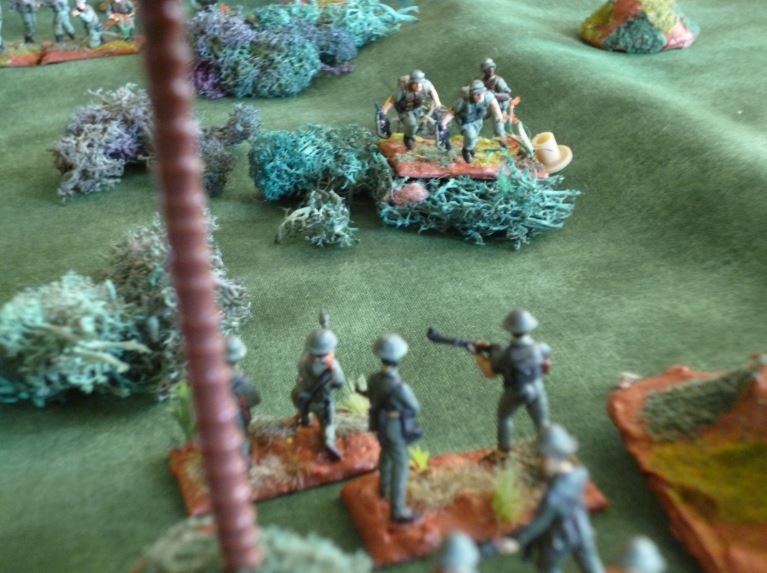
More men
come up to provide support, but the NVA fire is heavy: the unit is suppressed
and their assault is stalled.
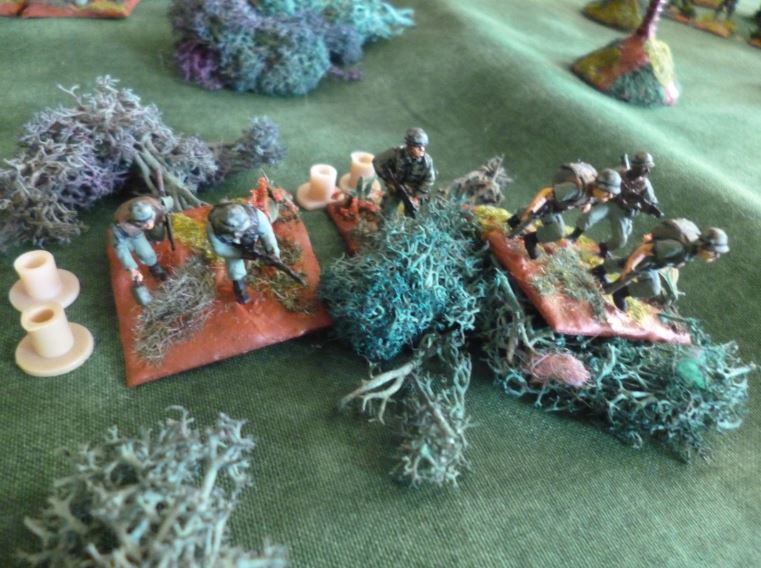
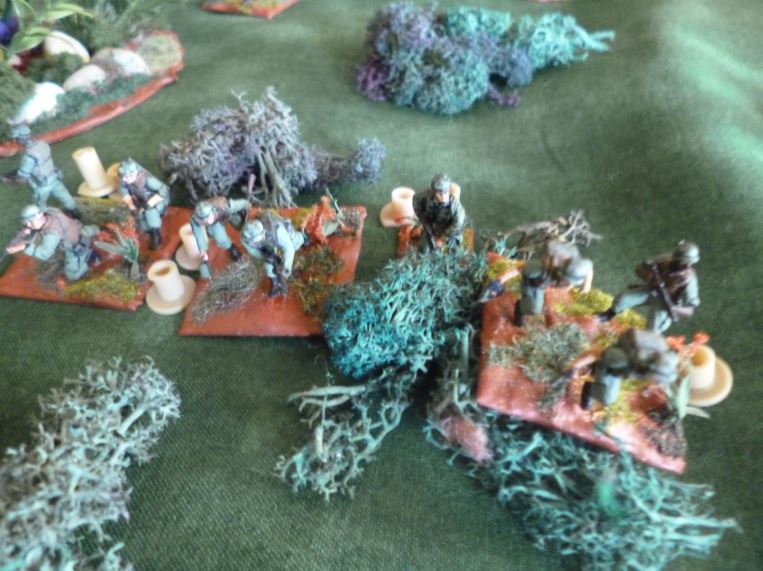
With no sign
of his 2 companies of promised reinforcements, the NVA commander decides to
stage a break-out with his last unengaged platoon.

They
succeed in slipping through the US perimeter around the rocky outcrop and
vanish into the jungle. If the US commander was hoping they were going to run
away, his hopes were unfounded; they sneak through the undergrowth until they
are behind the grunts assaulting the rocky outcrop and then attack them from
behind.
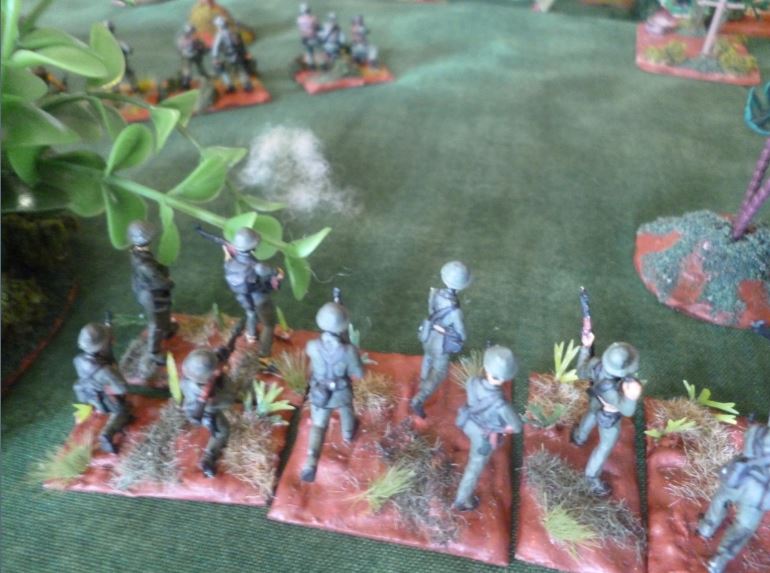
The NVA
catch the US platoon commander by surprise from behind and wipe out the command
stand.

One US stand
is suppressed, but the others turn around and return fire.
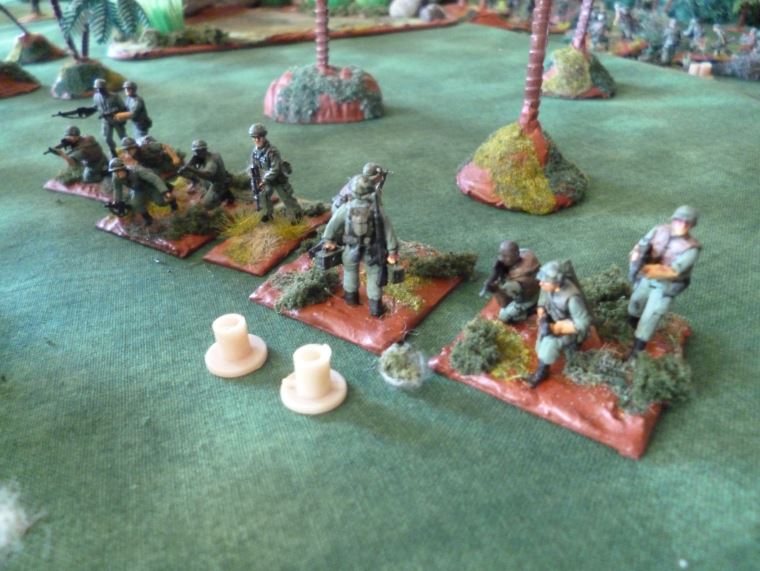
The
suppressed stand rallies and soon M60 fire is hitting the NVA.

The NVA
start losing men.
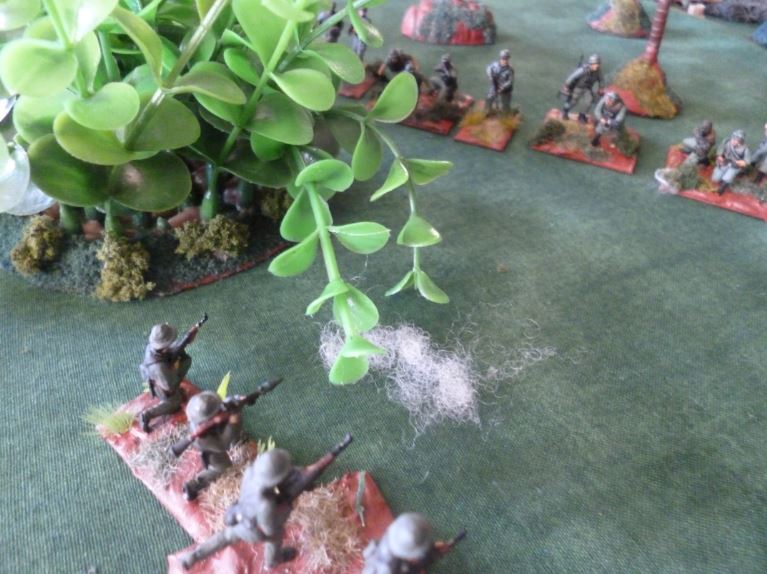


The NVA are
decimated but they stubbornly keep returning fire, and then things start going
terribly wrong for the US defenders.

The NVA
start hitting back.

And hitting
hard:








There was
grumbling from the US commander about loaded dice by this time, as the good
dice rolls just kept coming from the remaining stand of attacking NVA.


As a result
of whithering AK47 fire, the US line has collapsed.
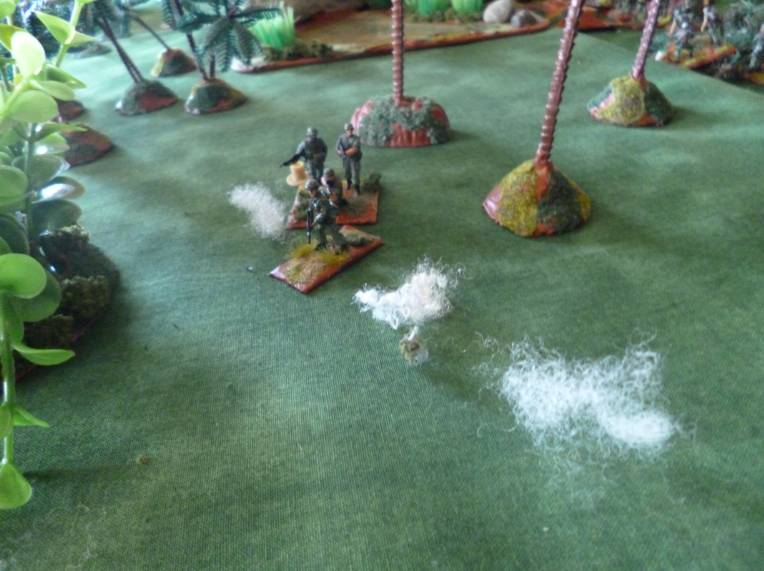
And still
the NVA hits kept coming.
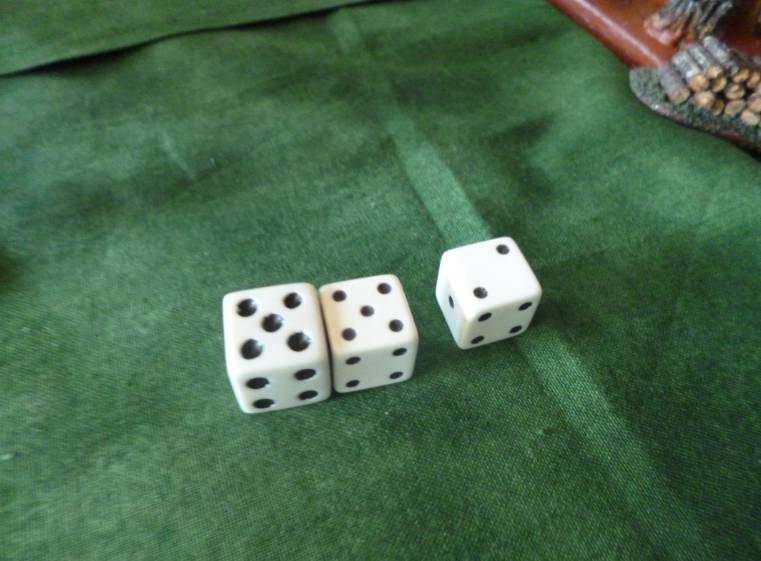
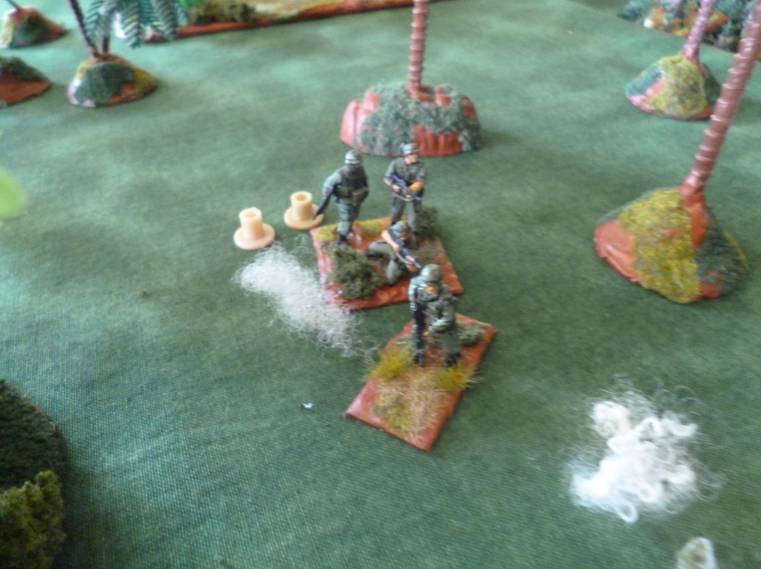
In response
to this fire and a radioed call for help, the US commander orders in the
platoon that wiped out the NVA on the other side of the rocky outcrop.
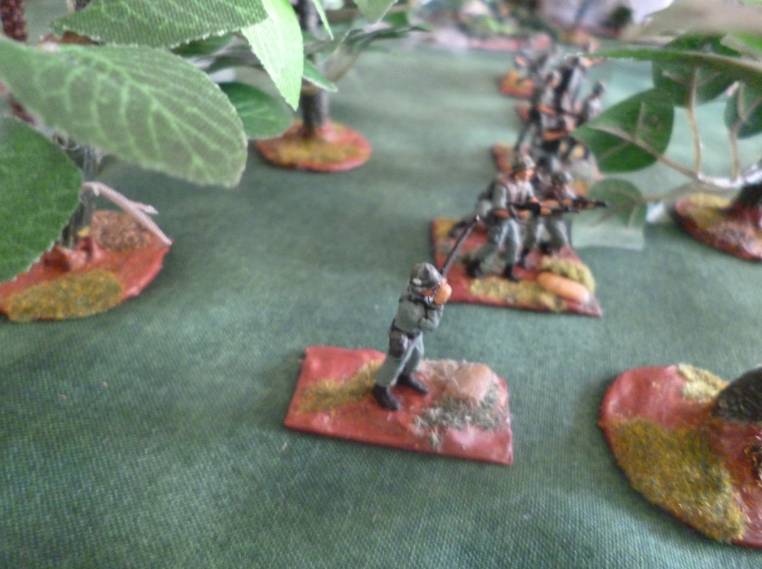
They run
through the trees to outflank the remaining NVA.
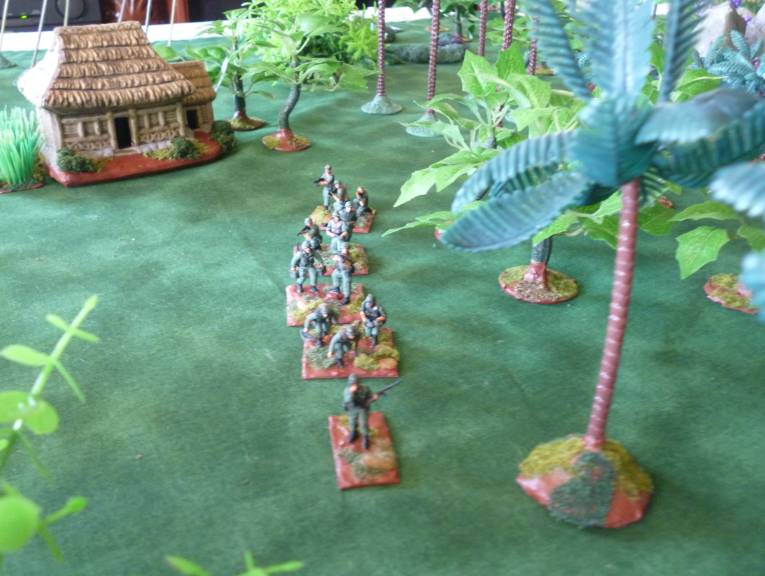
Taking up
positions behind the NVA, the grunts open fire.
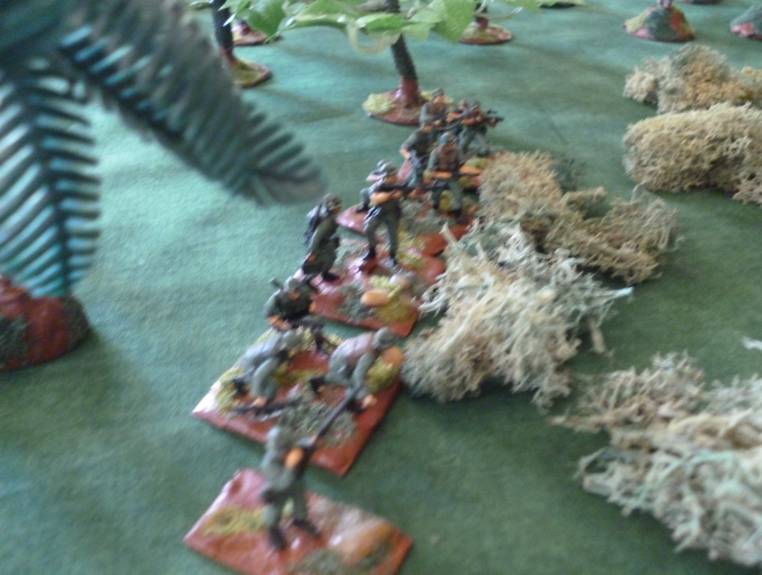
The NVA
platoon command stand is suppressed.
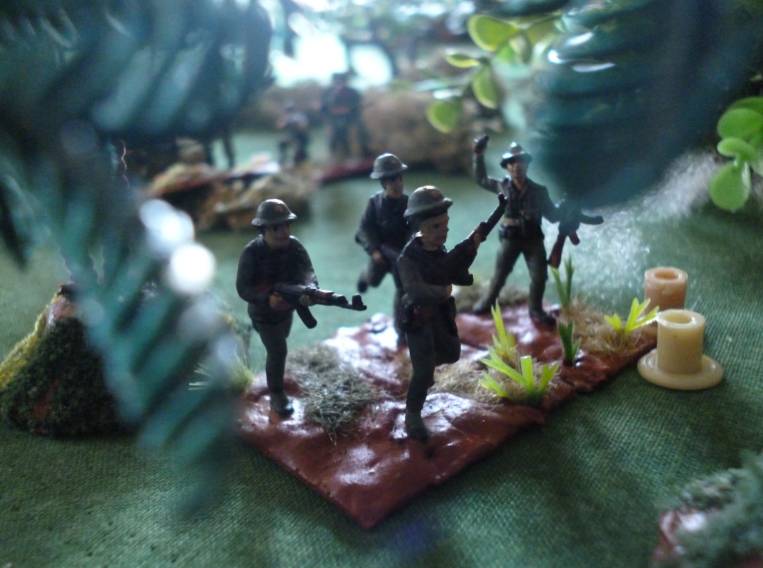
The other
NVA turn around and start directing accurate fire at the grunts attacking them
from behind.
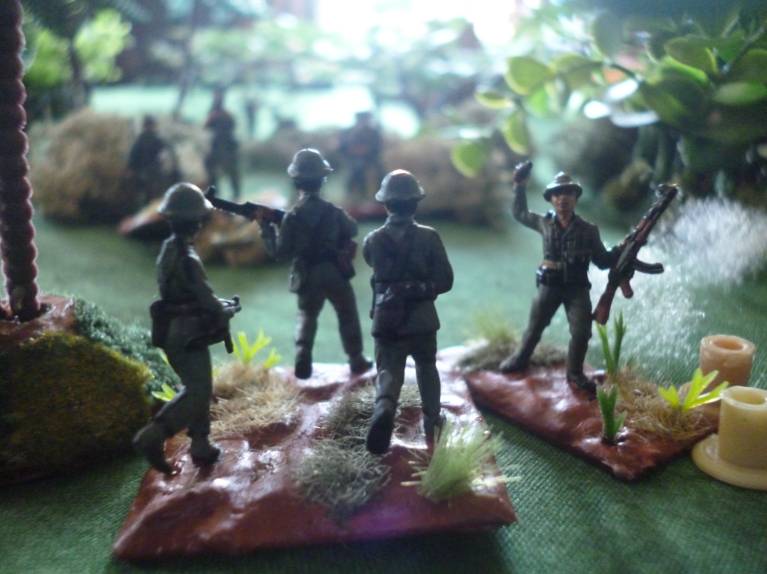
One US
stand is pinned; another is suppressed.
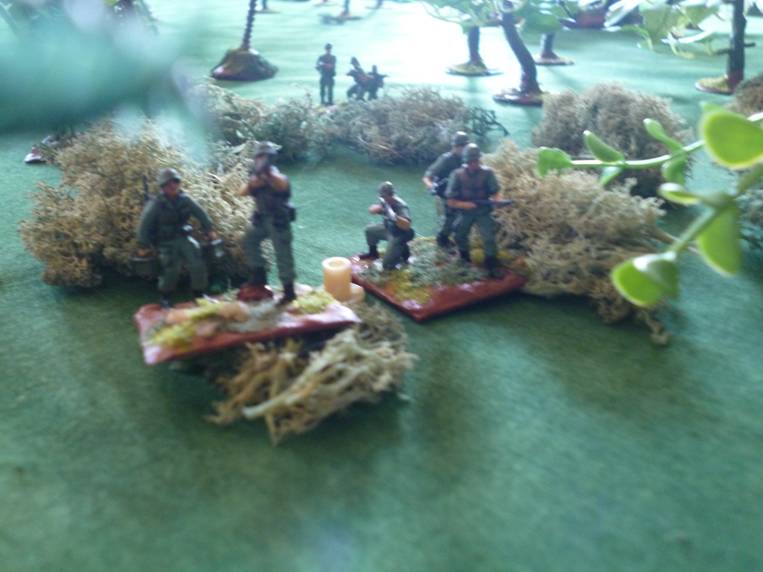
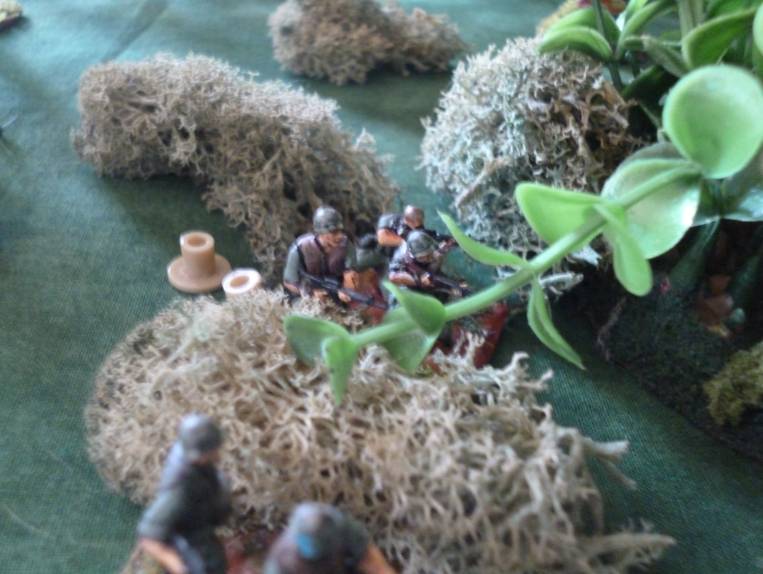
There are
further comments about loaded dice from the US commander….
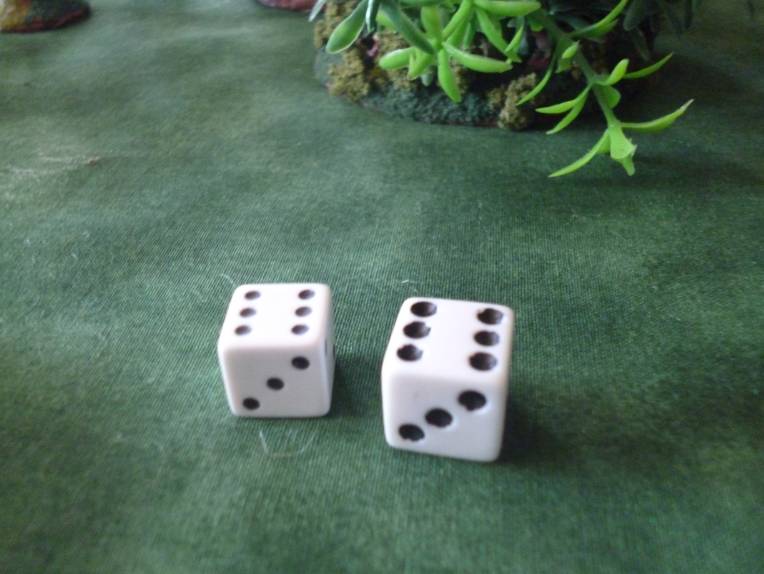
To which
the NVA commander replied that it was a shame these guys couldn’t hit the side
of a barn door when those Hueys were flying over them. Another US stand is
suppressed.
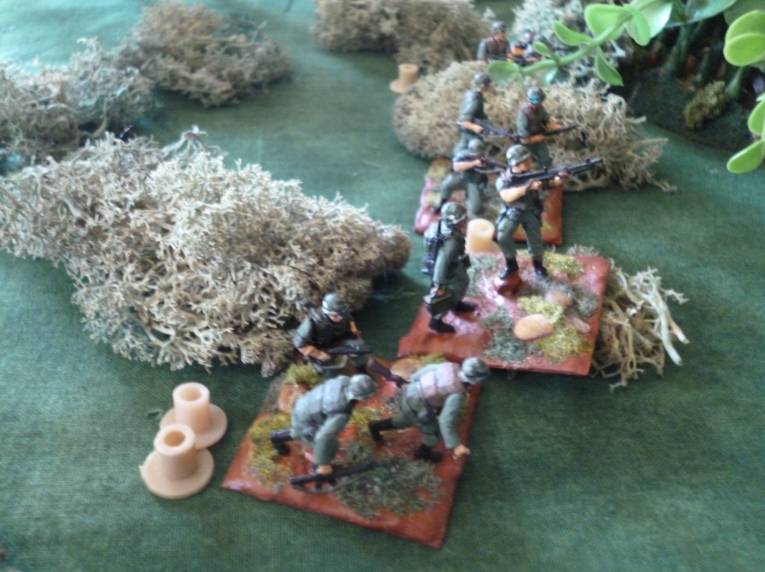
By now the
US commander is swearing that the dice are loaded, but they’re not.
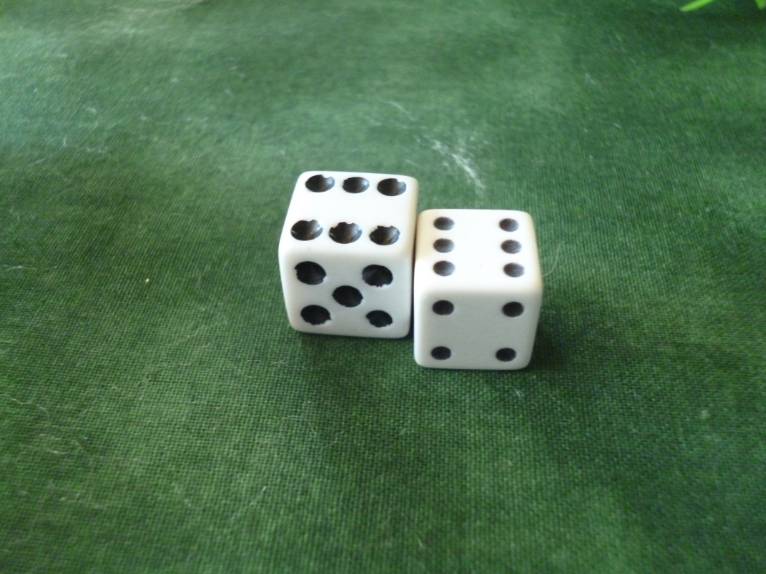
With a
third stand suppressed, the US rear attack has been well and truly stalled.
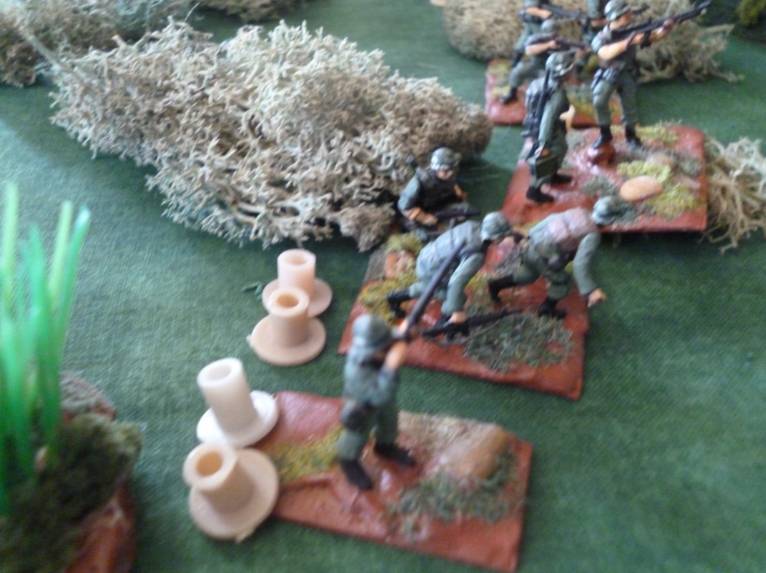
Back at the
rocky outcrop, the US flank attack is still being held back by sustained fire
from the defending NVA.
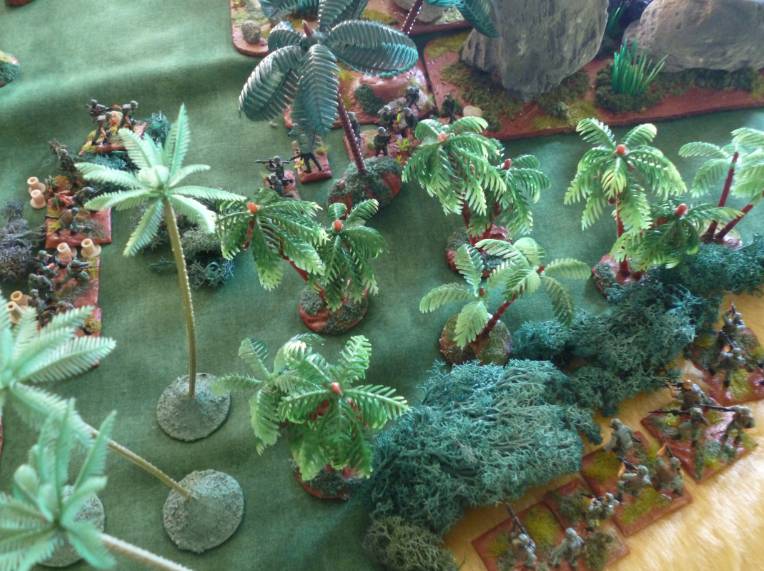
Cornered
and outnumbered, and still wondering why their reinforcements did not show up,
the NVA fight on.
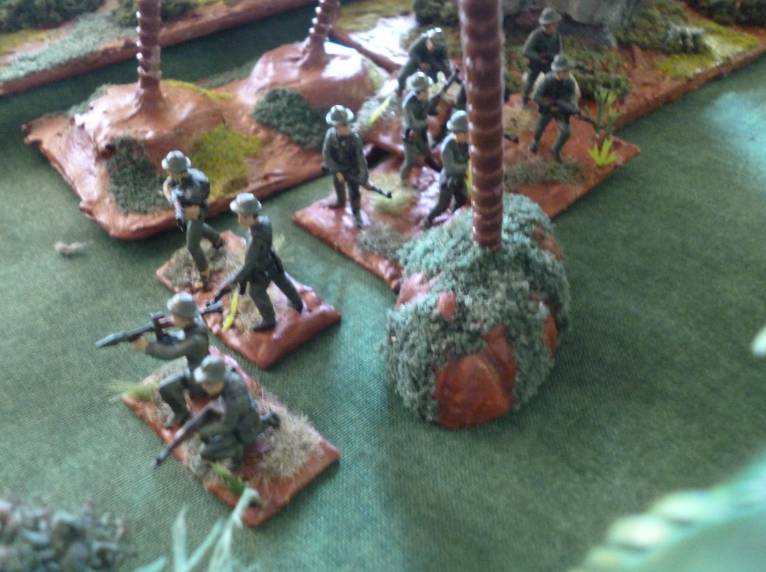
Here too,
accurate NVA fire has stalled the attack.
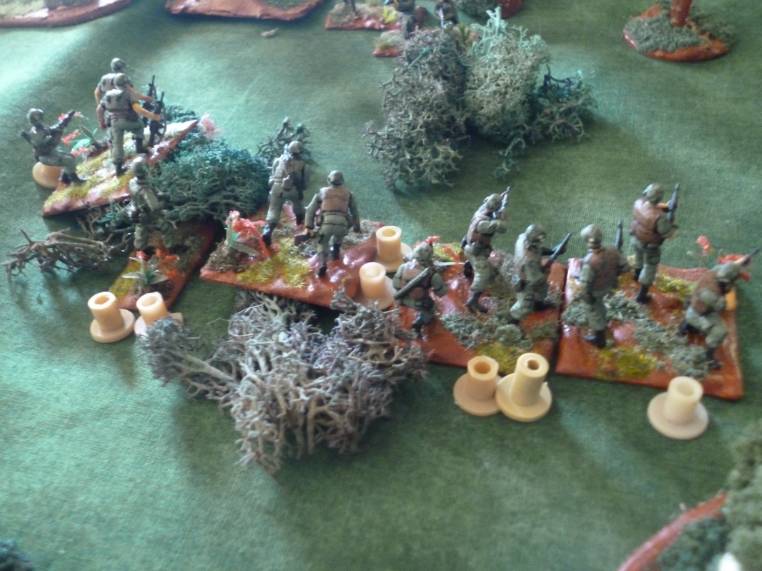
There are
more US troops waiting to attack from the LZ, but they dare not cross the open
ground in front of the rocky outcrop.
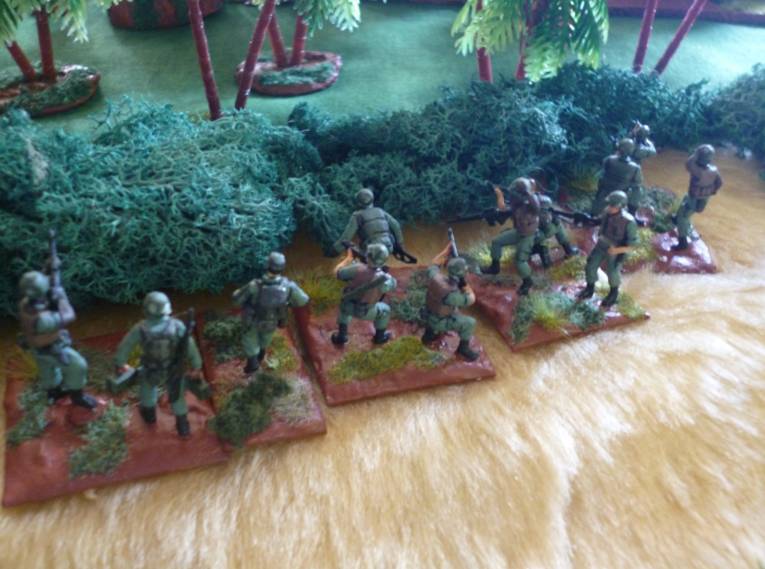
And the NVA
commander keeps throwing near-perfect dice rolls.
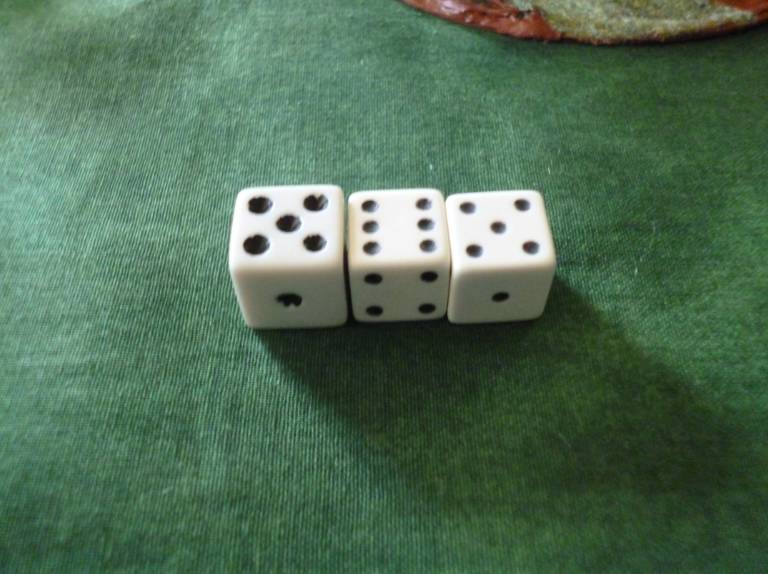
US
casualties are inevitable.
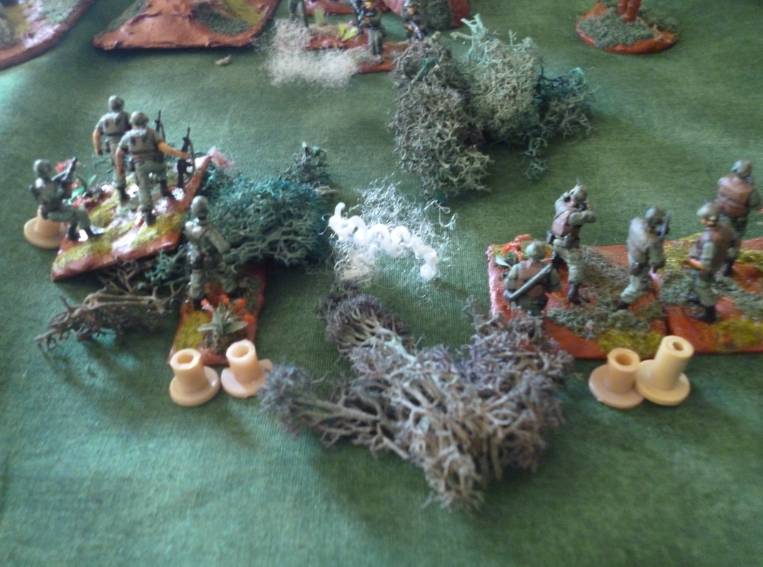
Going for
the weak link, the US commander decides to focus on the charmed remnants of the
NVA rear attack, opening up on them with an M60.
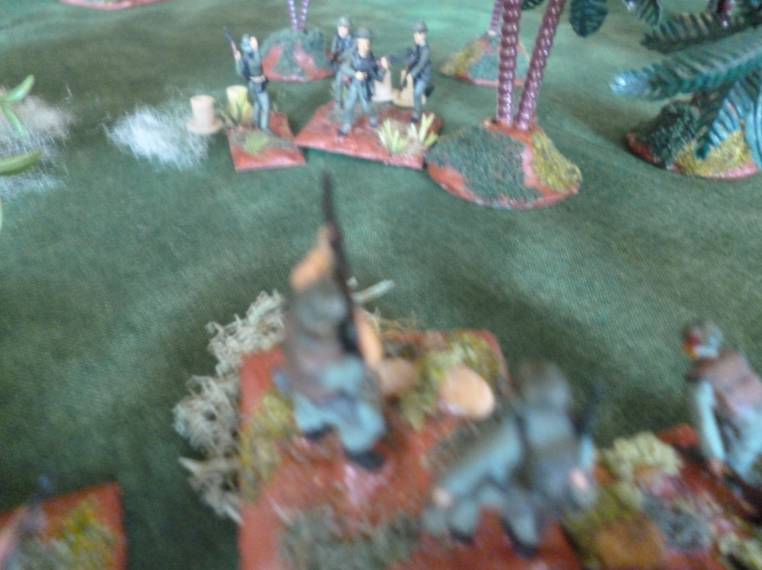
Proof that
the dice do not just favour the NVA soon comes:
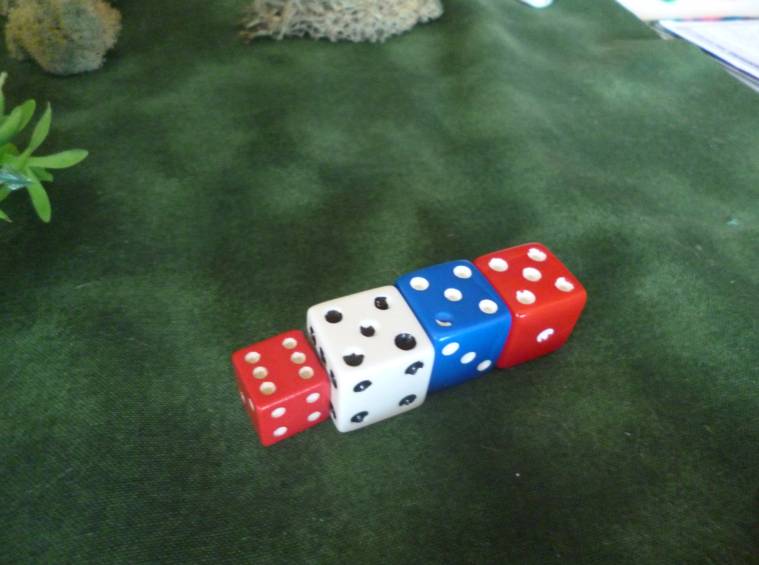
The NVA
platoon commander, still suppressed, has nowhere to go as fire is shifted to
him.
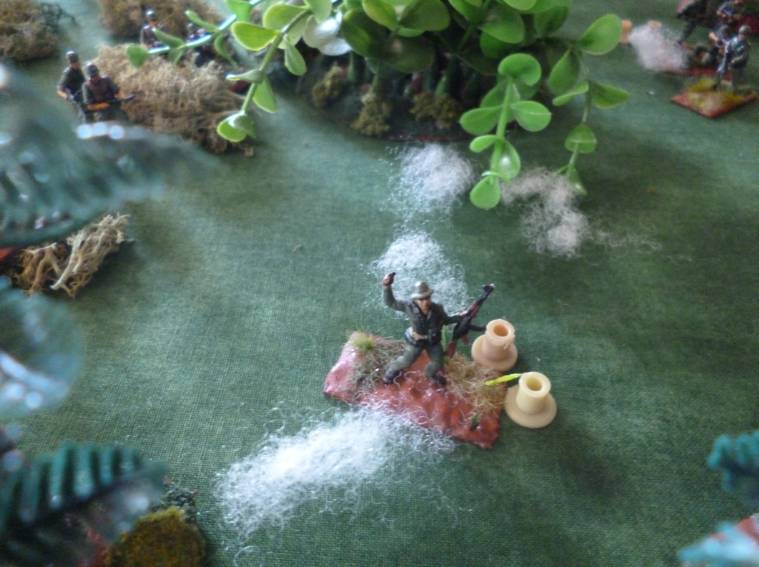
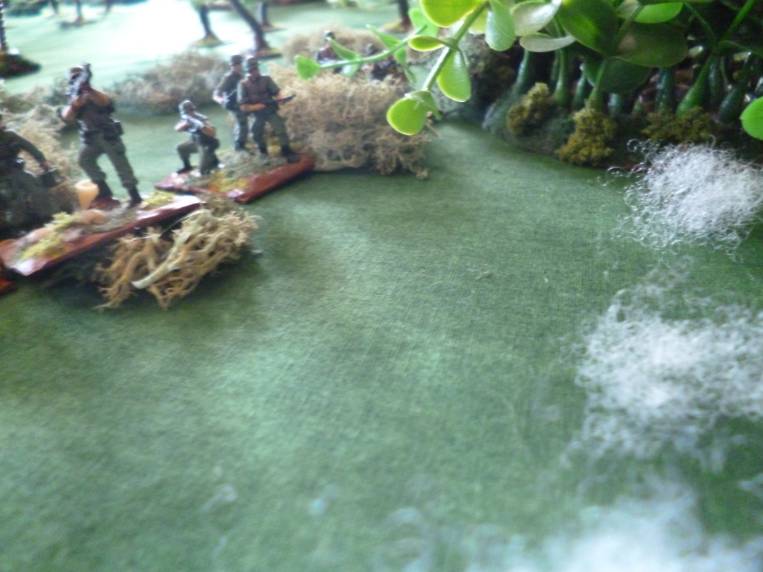
His death means
that the NVA commander has now lost two platoons to US fire. He has given up
hope of reinforcements: it looks like his regimental commander has decided that
he and his men are expendable. The US begin their final assault.
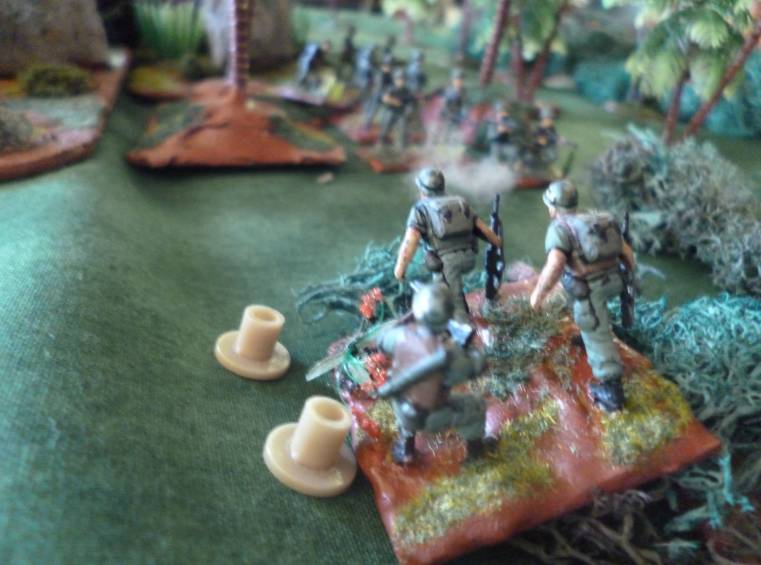
Finally, US
troops attack from the edge of the LZ.
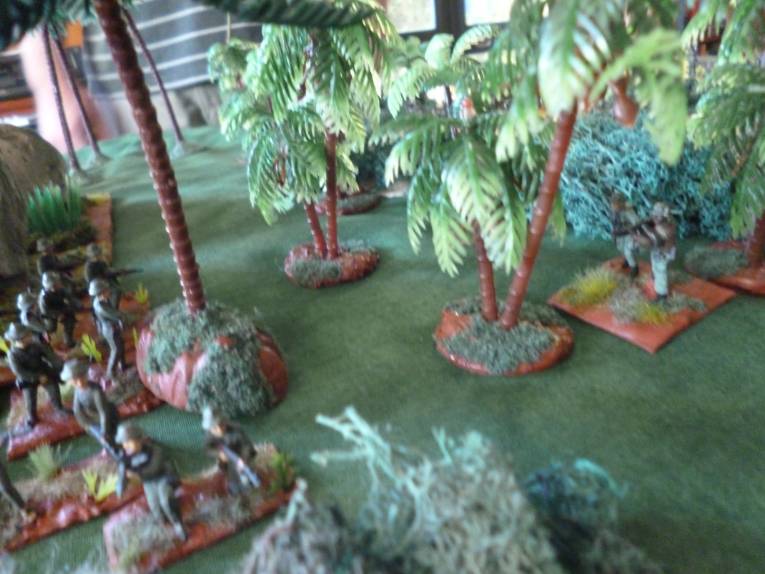
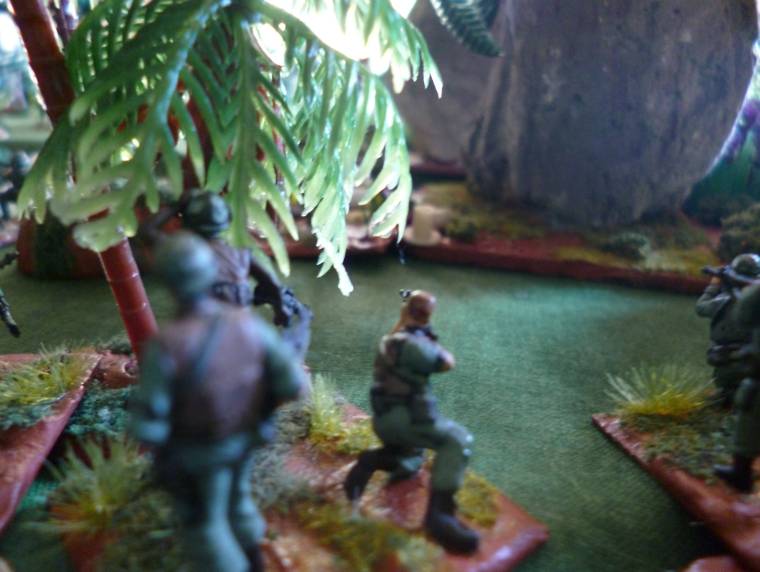
They too
start taking casualties.
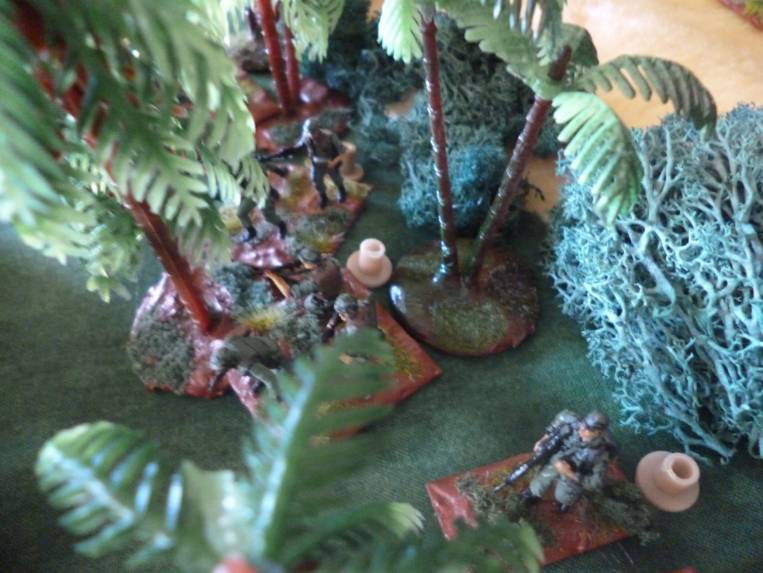
And there
is trouble coming to the NVA from another angle too.

At this
point, the VC commander surrenders: he is caught in a trap and there is no
point in fighting to the death.
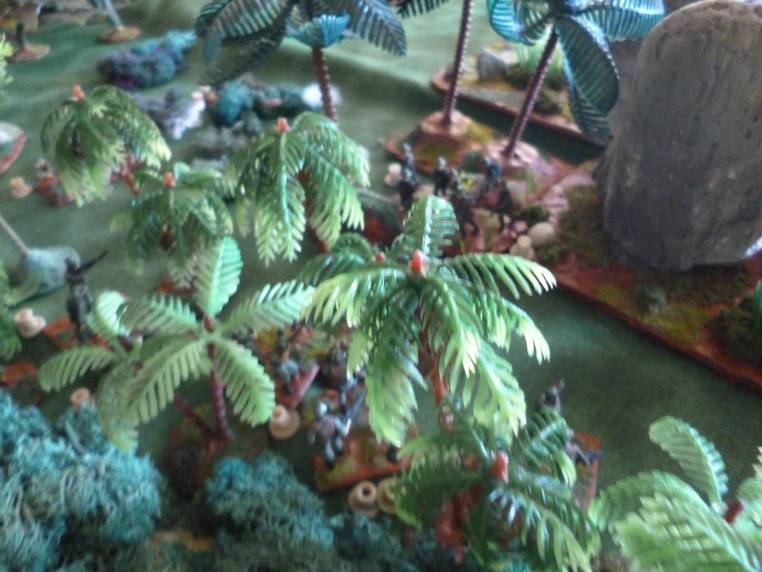
It was just
as well, as air support was already on its way….
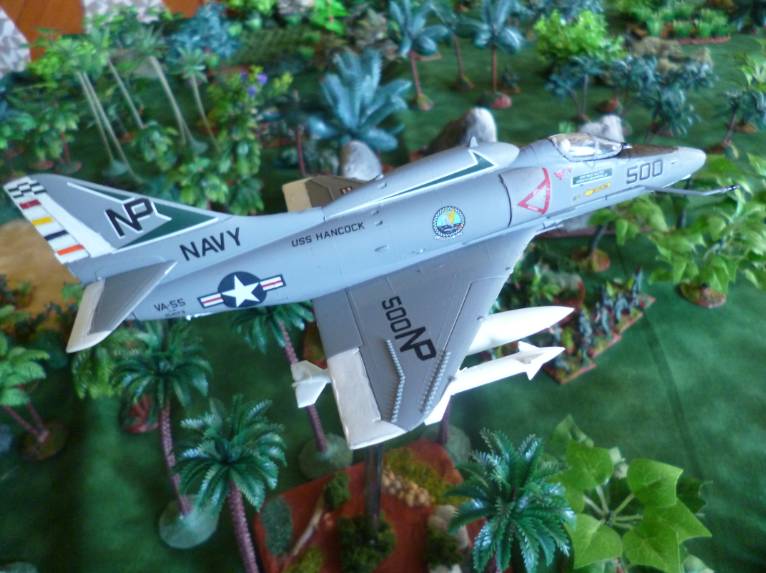
It was a
clear lesson in air mobility for the NVA: airmobile troops landing in your rear
area need to be dealt with promptly and in force or things will go awry, no
matter how hard your men fight.
In real life, NVA units south of this LZ shot down three of the five helicopters in the second lift on 15 November 1966, causing serious casualties but not stemming the flow of troops being airlifted into the LZ. As occurred in the game, the US commander ordered that subsequent lifts should come in from the north, where the NVA had no troops deployed. Those NVA defending to the south of the LZ became outflanked by cloverleaf search patterns, and then had to face airstrikes. After a night of bombing, the US force rolled the NVA back and found a hospital complex that turned out to be the VC medical centre for that whole operations zone.
© W.S. McCallum 12 January 2020
Web site © Wayne Stuart McCallum 2003-2020




